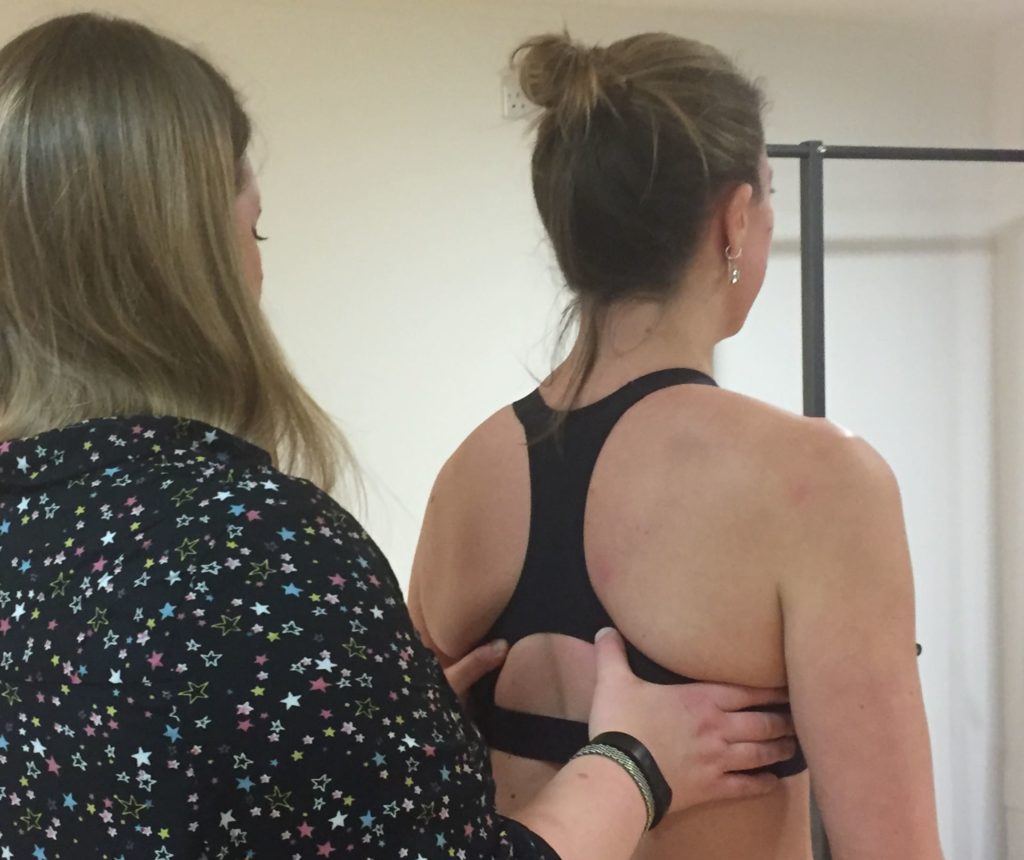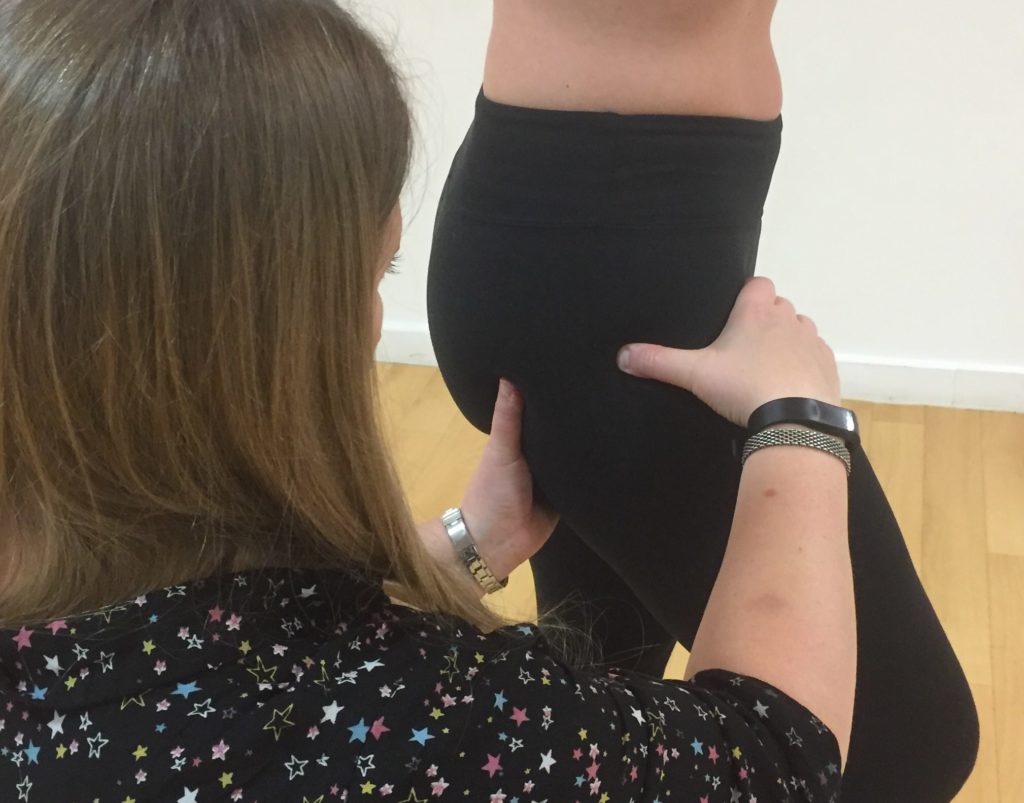Over the past few weeks, I’ve been writing about Diane Lee’s Integrated Systems Model (ISM), which is a big part of how I work. I’ve explained how I found Diane, how the ISM works with the published evidence, and the theory of regional interdependence from which the ISM derived. And, as everyone’s body and movement patterns are (and should be) different, I then described how we work out whether your movements are optimal for you, or whether you have failed load transfers or FLTs. Last week I wrote about how we find your FLTs through task analysis; this week it’s time to work out which of your FLTs is actually driving your problem, by correcting them, one by one.
Going back to last week’s example, we had a fictional patient called David, with a right knee that was sore when he put weight on it as he walked – so walking was his meaningful task. We assessed David’s standing posture and found that his neck was twisted to the right, his ribcage to the left, and his right hip was sitting a little too far forward. So we wrote down neck, thorax and right hip as his areas of failed load transfer, or FLT.
We then analysed the screening task of right one-leg stand. As David transferred his weight onto his right foot, he complained that his knee hurt (so we knew that the test was relevant to him). His neck position actually improved, his thorax position remained unchanged (still in FLT) and his right hip position worsened (increased FLT).
-
Thorax assessment or correction -
Hip assessment or correction
This showed us that David’s neck could be discounted as the driver; so now we have to work out whether we can make more difference to him by correcting his thorax or his right hip – ie, whether his driver is his thorax or hip.
I have put a video of me correcting a thorax here, and a video of me correcting a hip here; but effectively, my goal is to restore normal alignment of the ribcage and the hip, in order to optimise the FLT. Whichever correction is more effective, this is a sign that this area is the primary driver of the patient’s knee pain… and I therefore have to focus my treatment on this area.
In this example, when I corrected David’s thorax, he felt a little better but still had some symptoms of right knee pain when standing on his right foot. However, when I corrected his right hip, his thorax corrected itself, and his knee did not hurt when he loaded it. This is a very clear sign that his knee problem is coming from the FLT in the right hip.
In general, there are three types of FLTs, and these relate to the ABCs – alignment, biomechanics and control.
• If David has an alignment problem, then his hip will start and finish the task in FLT. This is the case above.
• If David has a problem with his biomechanics, the issue is that his hip does not move, when it should move. We cannot tell about this, because David’s hip isn’t supposed to move when he transfers his weight from one foot to the other.
• If David has a problem with his control, then his hip moves too much. David’s hip alignment gets worse when he loads it, so control may be an issue for him.
Now the work begins! Finding the driver doesn’t actually mean that we are ready to start treatment… we have to analyse the right hip and work out what is causing it to be poorly aligned when it is loaded – and this means vector analysis, which is the topic of next week’s post!
I have truly lost count of the number of patients over the years who have come to me with knee problems, very confused as to why they are still in pain, because they have religiously been practising “the exercises” – a mythical set of exercises which will allegedly fix any knee! Hopefully it’s now becoming clear that your knee just might be more complicated than that, because knees don’t work in isolation. But theory is only theory, so if you’re still sore despite being dedicated to your homework (or if you just aren’t sure that the exercises you’ve been given are right for you) then please call my team on 0207 175 0150 and book an assessment, so that I can start to work out what’s driving your knee pain, and how to help you move forward.


